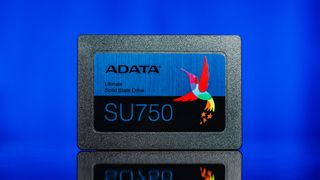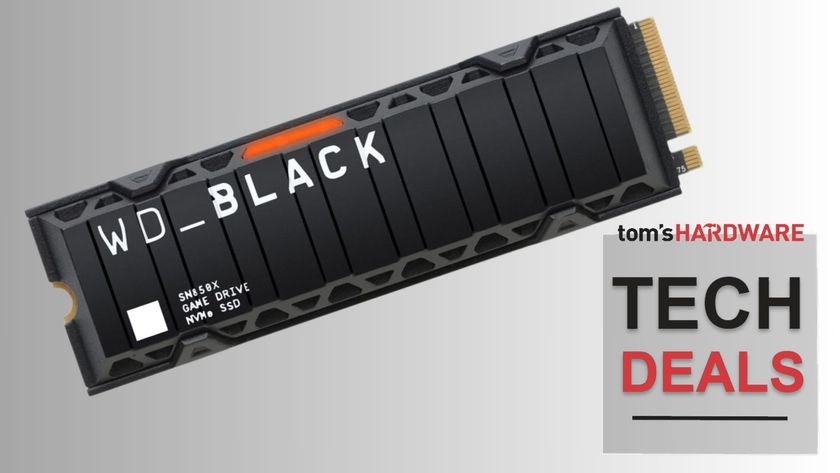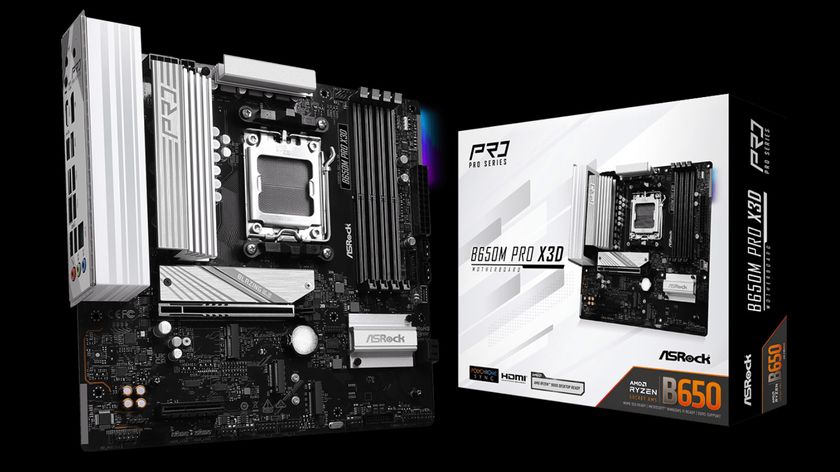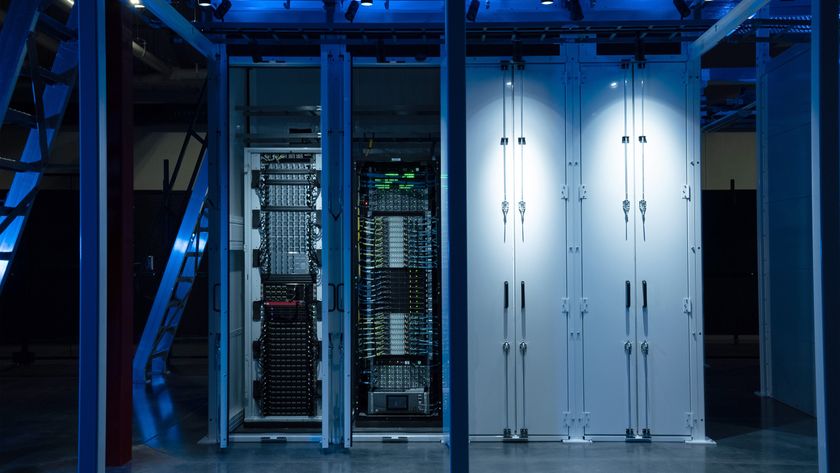Tom's Hardware Verdict
Adata’s Ultimate SU750 has decent performance for a SATA drive, but it slurps power and competitors give you a lot more for the same price.
Pros
- +
Endurance
- +
Decent application performance
- +
Large SLC write cache
- +
Software package included
Cons
- -
3-year warranty
- -
Sustained write performance after the SLC cache exhausts
- -
Low power efficiency
Why you can trust Tom's Hardware
Features and Specifications
Going by Adata’s latest mainstream SATA SSD’s name, Ultimate SU750, it may sound like you’ve found the ultimate SSD, and, if we were reviewing it back in 2010, it just may have been. Unfortunately, in the world of SSDs today, it is rather unimpressive. SATA SSDs are no longer the speedy, fun devices they used to be in light of the latest NVMe offerings. Although, that’s not to say it is not worth looking into if you are in search of something cheap when it goes on sale.

Like Adata’s other entry-level NVMe SSD, the XPG SX6000 Pro, the Ultimate SU750 features a Realtek SSD controller and Micron NAND flash. Specifically, it is powered by the Realtek RTS5733DMQ controller. And contrary to what Adata says on the device’s web page (as of publication time), this controller is a DRAMless, two-channel controller. To the non-tech savvy, this may not mean much, but these two factors have performance-limiting implications, which negatively impact the real-world user experience.
More complex, but more consistent SSDs feature a DRAM cache, but unlike those, Adata’S Ultimate SU750 lacks a DRAM package. The DRAM is usually used for accelerating flash translation layer access and improves device performance dramatically in some cases. This means that, without it, operations such as write-heavy mapping, garbage collection, wear leveling, and flash management will encounter significantly higher latency which in turn can impact the time of response to your system’s requests. Implementing a DRAMless controller is one way manufacturers can significantly reduce bill of materials (BOM) costs, but SSDs like this are usually much slower and latent under write-heavy, mixed workloads; especially under sustained writing.
The other half of the SU750’s potential problem is that there are only two NAND channels for bandwidth to handle all those FTL processes and move data around while juggling in host requests. Which means under heavy workloads, things can get a bit congested. This is half the channels that other mainstream SATA SSD controllers have. Just as DRAM can help improve the performance in an SSD, more NAND channels enable faster performance as well. With more channels, there is more opportunity for striping, interleaving, and pipelining optimization. However, these come at the cost of increased power consumption and die size and thus affects production cost, which is why the SU750 features just two.
Specifications
| Product | Ultimate SU750 256GB | Ultimate SU750 512GB | Ultimate SU750 1TB |
| Pricing | $45.99 | $64.99 | $119.99 |
| Capacity (User / Raw) | 256GB / 256GB | 512GB / 512GB | 1024GB / 1024GB |
| Form Factor | 2.5" 7mm | 2.5" 7mm | 2.5" 7mm |
| Interface / Protocol | SATA 6.0 Gb/s | SATA 6.0 Gb/s | SATA 6.0 Gb/s |
| Controller | Realtek RTS5733DMQ | Realtek RTS5733DMQ | Realtek RTS5733DMQ |
| DRAM | None | None | None |
| NAND Flash | Micron 64L TLC | Micron 64L TLC | Micron 64L TLC |
| Sequential Read | 550 MB/s | 550 MB/s | 550 MB/s |
| Sequential Write | 520 MB/s | 520 MB/s | 520 MB/s |
| Random Read | 65,000 IOPS | 65,000 IOPS | 65,000 IOPS |
| Random Write | 75,000 IOPS | 75,000 IOPS | 75,000 IOPS |
| Encryption | N/A | N/A | N/A |
| Endurance | 200 TBW | 400 TBW | 800 TBW |
| Part Number | ASU750SS-256GT-C | ASU750SS-512GT-C | ASU750SS-1TT-C |
| Warranty | 3-Years | 3-Years | 3-Years |
Even with just two NAND channels though, the Ultimate SU750 can still sequential speeds of up to 550/520MB/s read/write and is capable of delivering 4K random performance of up to 65,000 /75,000 IOPS read/write. Capacities are available from 256GB up to 1TB and what stands out quite a bit is its durability. The SU750’s endurance figures are twice the competition’s per capacity thanks to its LDPC ECC. Incredibly, the 1TB model we are reviewing today is rated to endure up to 800TB of writes before the 3-years warranty voids.
Software and Accessories


Adata provides both an SSD Toolbox and an Acronis True Image OEM software download from the company’s website. With the toolbox, one can monitor the SSD, run diagnostics, update the firmware if available, and optimize the system. Acronis True Image OEM, on the other hand, is a simple to use software for cloning your existing data over to your new SSD. You can also use it for making system images for backup and restoration purposes.
A Closer Look
Adata SU750 is a 2.5” 7mm form factor SATA 6Gb/s SSD that features a plastic and metal finish. Overall, it feels cheap and flimsy, unlike the Crucial MX500 or Team Group Vulcan that have sturdy a metal finish all around. And, while the 2.5” form factor is rather large in comparison to an M.2 SSD these days, the SU750’s PCB within the casing is actually quite small.







In all, there are four Adata branded packages on it, but within are Micron’s second-generation 64L TLC NAND flash. And, directly next to the SATA data connector is the Realtek controller powering it. The controller is closest to the SATA data connector for the least noise/interference.
MORE: Best SSDs
MORE: How We Test HDDs And SSDs
MORE: All SSD Content

Sean is a Contributing Editor at Tom’s Hardware US, covering storage hardware.
-
mdd1963 So in 1 TB guise, the Adata costs $10 more than the 1 TB Crucial MX500?Reply
Not a good strategy. -
Calicifer Why this review features Intel SSD? They are M2 drives, not SATA. It is pointless, out of context comparison which makes this whole review look like author was chilling for Intel.Reply -
Calicifer Replymdd1963 said:So in 1 TB guise, the Adata costs $10 more than the 1 TB Crucial MX500?
Not a good strategy.
At the moment, they are cheaper drives where I'm. 34 euros vs 44 euros. Adata is a great budget option, but Crucial MX500 is simply a better SSD. More solidly built, longer warranty, generally faster and better performing.


